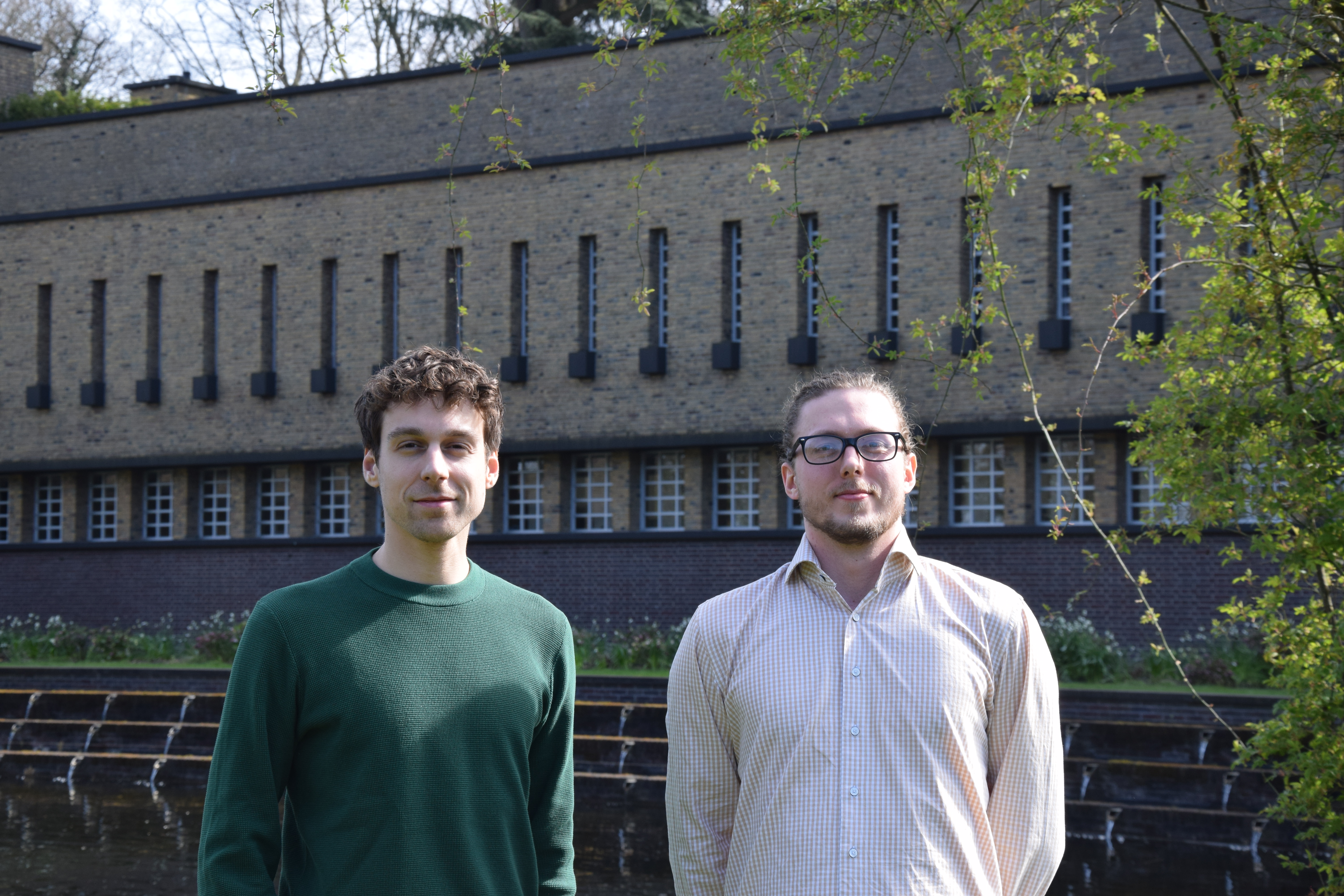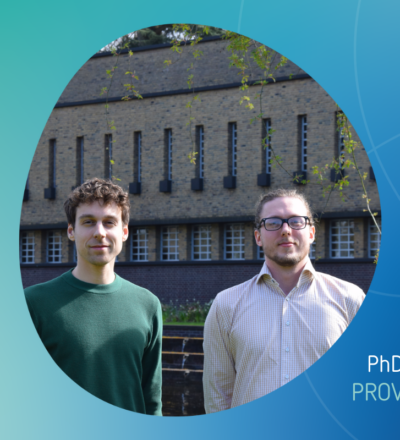For our PROVE IT project – a project that aims to improve the efficiency of CO2-to-methanol production – ISPT collaborates closely with PhD candidates Juraj Petrík and Hilbert Keestra. While both researchers possess backgrounds in chemical engineering, their areas of expertise diverge. In this article, we delve into their motivations for joining the project, discuss the nuances of their research, and explore the latest developments within PROVE IT.
Juraj and Hilbert, currently in their second year of their PhD programs, share a common aspiration to contribute to a sustainable future. Consequently, the opportunity to be part of the PROVE IT project was an undeniable calling for them. As Hilbert puts it: “I chose this subject because I believe it has the potential to make a significant impact on the fight against climate change. Methanol is a versatile and widely used chemical, and its production using captured CO2 as a feedstock can help reduce greenhouse gas emissions while providing a sustainable source of energy.”

Optimizing carbon flows
The PROVE IT project is divided into three result areas. The first area involves assessing the quantity and location of available CO2 sources. In that area Juraj is putting his efforts. “My focus lies in mapping out carbon in different forms, such as industrial CO2 emissions or municipal solid waste, and how it flows through the Dutch economy. By comprehending how carbon circulates within our society and across diverse industrial sectors today, we can better optimise its utilization and conversion in the future.” Juraj’s research involves assessing environmental impacts, particularly climate change effects. He also studies trade-offs between environmental and circularity performance of different conversion technologies, including methanol production from CO2. “Understanding both environmental and circularity performance of methanol production from CO2 is crucial. This understanding helps quantify the technology’s contribution to a circular economy and efforts needed to shift from a linear to a circular economy,” says Juraj.
Through carbon flow analysis and the Life Cycle Assessment (LCA) of methanol production, the research brings value by calculating carbon footprints, identifying areas for improvement, and exploring ways to decrease the environmental impact. The ultimate goal is to draw conclusions based on a clear understanding of the flows obtained through this research.
On a high and low-level
While Juraj focusses on a high-level perspective and their viability for utilization, Hilbert directs his attention towards enhancing efficiency at a lower level. Hilbert focuses on the direct catalytic conversion of CO2 to methanol, utilizing a commercial Cu/ZnO/Al2O3 catalyst. Hilbert emphasizes the significance of cost-competitiveness and long-term stability in sustainable technologies during the energy transition. “My research addresses these challenges by improving the efficiency and understanding of the green methanol synthesis process. With the new insights and designs from my research, I aim to enhance the competitiveness of green methanol compared to fossil fuel-based methanol,” he explains. By integrating Hilbert’s efficiency data into future scenarios, Juraj can provide a more comprehensive assessment. This results in a holistic evaluation of the project’s impact.
A new reactor design
Driven by his passion for developing new and innovative solutions for a more sustainable future, Hilbert finds his research topic perfectly aligned with this goal. This passion has recently yielded a noteworthy outcome in the form of a novel reactor design. This design has demonstrated significant cost savings when compared to existing designs. “The concept is simple,” Hilbert explains. “The Infinity Reactor, a shell-and-tube type reactor, converts CO2 to methanol through a direct reaction that generates heat along the reactor. By utilizing the temperature difference between the inlets and outlets, it operates as a quasi-gas-cooled reactor. This approach allows the reactor to attain a higher average temperature. This, in turn, reduces the volume of catalyst required compared to traditional adiabatic reactors without heat management. Compared to conventional water-cooled reactors, the Infinity Reactor has lower investment and operational costs while requiring a similar catalyst intake.”
Maximizing catalyst stability and efficiency
Alongside his work on the novel reactor design, Hilbert is also working on catalyst deactivation in collaboration with Avantium. The goal is to predict the rate and type of catalyst deactivation under practical operating conditions. From literature, the main causes for deactivation are water formation and high temperatures. Both of these factors promote detrimental changes in the catalyst. The PROVE IT project investigates the relationship between operating conditions and their impact on long-term catalyst stability. “One advantage of the new reactor design is a reduced catalyst deactivation rate (to be confirmed by experiments). This reduction is achieved through a lower single-pass conversion. As a result, there is a less frequent need for catalyst replacement since the formation of the water by-product is decreased,” explains Hilbert. Despite the lower conversion rates, Hilbert’s clever heat integration design ensures improved catalyst performance and higher productivity.
Can methanol become the new crude oil?
At the end of the interview, the question arises: can methanol potentially replace crude oil? While methanol production from CO2 holds potential as a viable solution, it is crucial to address the significant energy requirements associated with the process. “Carbon intensity of electricity has a crucial role on impacts of circular carbon technologies such as methanol production from CO2. Once we have enough renewable energy, methanol from CO2 will be a key alternative to crude oil,” states Juraj, whose research also delves into carbon and energy efficiency of alternative circular carbon technologies alongside methanol. “We also look at gasification and pyrolysis. Considering their carbon and energy efficiency, these might be solutions for converting biomass and hardly recyclable plastic waste to carbon-rich feedstock for the chemical industry. These solutions could complement methanol from CO2 as an alternative to crude oil,” he adds. However not all carbon will be used by these technologies, some may be lost in recycling processes or incinerated. The goal is to keep it within the circular system and prevent atmospheric release. “The challenge for us is to find the most effective ways to keep carbon in the loop and maximize its circularity,” he concludes.
Acknowledgement
This project is co-funded with subsidy from the Topsector Energy by the Ministry of Economic Affairs and Climate Policy
